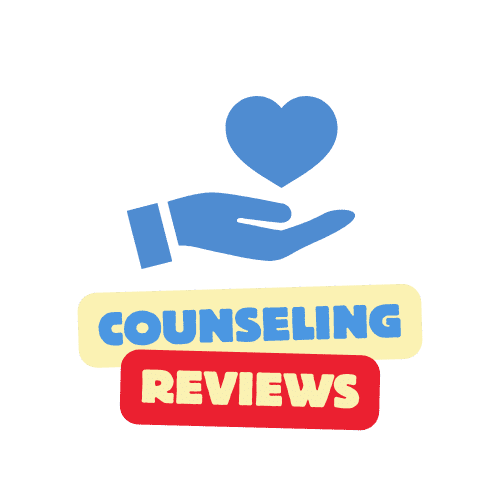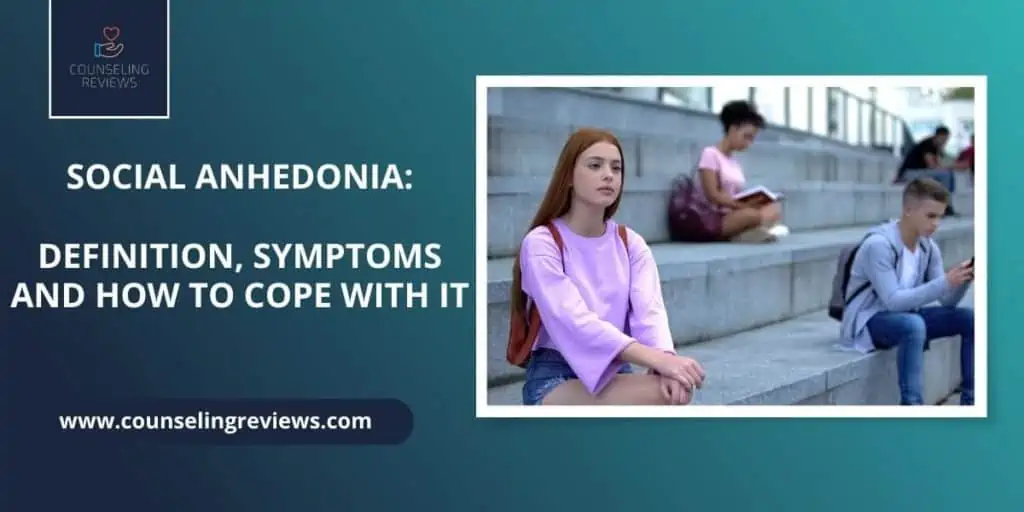Short on time?
Social anhedonia is a condition in which people experience a decreased interest in social activities and interactions. People with social anhedonia may find it difficult to enjoy spending time with others, and they may feel indifferent or even repulsed by social situations.
There are a number of things that can be done to cope with social anhedonia. Some of these include:
- Talk to a therapist or counselor. A therapist can help you understand your social anhedonia and develop coping mechanisms.
- Practice mindfulness. Mindfulness is the practice of paying attention to the present moment without judgment. This can help you to become more aware of your thoughts and feelings, and to learn to accept them without judgment.
- Challenge your negative thoughts. When you start to think negative thoughts about yourself or social situations, challenge them. Ask yourself if there is any evidence to support these thoughts.
- Set small goals. Don’t try to do too much too soon. Start by setting small goals for yourself, such as going for a walk with a friend or attending a social event.
- Reward yourself for your efforts. When you achieve a goal, reward yourself. This will help you to stay motivated.
- Take care of yourself. Make sure to get enough sleep, eat healthy foods, and exercise regularly. Taking care of your physical and mental health can help you to cope with social anhedonia.
Introduction
Building social relationships is embedded in human nature. That’s why people feel happy and accepted in the company of like-minded individuals.
It’s what we do to get a sense of belonging and contentment.
However, that is not true for everyone. A small group of people struggles when they find themselves in a social environment surrounded by others.
Anhedonia is the reason behind their withdrawal—and it has nothing to do with social anxiety.
Individuals with anhedonia simply don’t find pleasure in socializing, while individuals with social anxiety fear, resent and have negative feelings towards being in social environments.
To put it simply, anhedonia is the inability to feel pleasure, which is different from anxiety.
What is Social Anhedonia?
Social anhedonia is the inability to find pleasure in social interactions.
Such individuals prefer solitude and have very low interest and drive for social interactions. They believe that the less social contact they have—the better.
Social anhedonia contributes to social and emotional dysfunction and loneliness, while individuals dealing with it are less likely to be interested in developing relationships.
When there is no motivation for interaction with others, individuals start skipping social events and turn down invitations to gatherings.
Examples of Social Anhedonia
Social anhedonia is a condition that many may not understand or even dismiss.
Many disregard or do not acknowledge it whatsoever because it is related to many other mental health conditions and illnesses.
Some examples that point to how anhedonia include:
- You used to be excited to go out to dinners and parties with friends, but now you don’t feel any excitement and avoid such gatherings;
- You used to love eating and to cook for family and friends, but now have no interest anymore and need to be reminded to eat;
- You used to love going to painting classes but now have no desire to paint and interact with members of the painting team.
Other Types of Anhedonia
Although there is an ongoing debate on whether we can categorize anhedonia as social and physical anhedonia or any other type of anhedonia, some experts still make the distinction.
They separate the inability to feel real pleasures, including touching, eating, or even sex.
That might be because anhedonia is treated more as a symptom than a condition.
Experts like to distinguish between several other types of anhedonia:
- Physical anhedonia is defined as the inability of an individual to experience pleasure in everyday acts like eating, bathing, or engaging in sexual intercourse.
It plays a role in many mental disorders, and scientists consider it a contributing factor to schizophrenia; - Sexual anhedonia impacts the individual’s ability to enjoy pleasure during sexual climax.
This condition is also known as orgasmic anhedonia. The lack of sexual pleasure is a result of depression or a hormonal imbalance; - Musical anhedonia is a lack of having a pleasurable experience while listening to music.
There are ways that music can have an emotional effect on the brain, but musical anhedonia appears when a disconnection appears between the rewards and auditory centers in the brain.
What are the Symptoms of Social Anhedonia?
Anhedonia is tightly related to different forms of depression. Therefore, it is easy to misunderstand the social anhedonia symptoms.
1. Social Withdrawal
The main symptom of social anhedonia is social withdrawal or removal from a social environment and activities.
That means not attending social gatherings, communicating with family and friends through the phone, or any other means of communication. The feeling of not fitting in dominates.
2. Poor Social Adjustment
Individuals have difficulty adjusting to social environments and have to put effort into faking enjoyment during social events.
They lack socialization skills which in turn affects their social functioning.
3. Lower Positivity
A pessimistic view of positive events and activities is characteristic of an individual suffering from social anhedonia.
That is due to the inability of that individual to feel positive emotions.
4. Lack of Relationships
With social anhedonia, there is a lack of excitement and disinterest in pursuing and maintaining any kind of relationship, whether with family, friends, or a potential partner.
Events, where they can establish interpersonal relationships are of no interest to the individual.
5. Flat Vocal Expressions
Uninterested and flat vocal and facial expressions are clear signs of someone with social anhedonia.
They send signals of not finding pleasure in the communication, which results in discouraging social interaction.
No one likes a correspondent that shows no reaction or sign of interest in the conversation because it shows a lack of respect.
6. Diminished Emotional Response
Due to the reduced ability of emotional response, individuals with anhedonia struggle when having to bond with family and friends.
Finding comfort in the companionship of others is hard, and they may react to positive situations through negative emotions and actions.
What Are the Causes of Social Anhedonia?
There is no specific link to what condition or state causes social anhedonia. Experts relate this condition to changes that occur in brain activity.
There may be an imbalance in dopamine production or the chemical responsible for our good mood, which interferes with how we seek and experience rewards and positive events.
However, experts believe that some conditions and mental illnesses are related to social anhedonia causes.
Depression, schizophrenia, and bipolar disorder are the ones considered to be the core symptoms of anhedonia.
In cases with a diagnosed bipolar disorder, doctors study the severity of the individual’s anhedonia to determine how severe the state of the bipolar disorder is.
That, in turn, helps them to provide better treatment.
Reduced energy, lack of social excitement, and diminished eagerness for life are significant symptoms of both depression and anhedonia.
One feeds off the other, which is why social anhedonia is considered a prominent type of depression.
Depressed individuals tend to have a slow emotional recovery, while individuals diagnosed with anhedonia show an impaired reaction to social interaction.
There have been cases where people with coronary artery disease, Parkinson’s disease, Alzheimer’s disease, substance misuse, and diabetes allude to signs of social anhedonia.
Both social and physical anhedonia are signs of pre-existing depression. It is common for individuals who’ve been diagnosed with depression also to experience anhedonia.
Risk Factors for Social Anhedonia
Although not a rule, there is always an increased risk that people who suffer from mental illnesses may develop social anhedonia.
Some of the risk factors include:
- Diagnosis of depression;
- Diagnosis of schizophrenia;
- Having an eating disorder;
- Dementia-related illnesses;
- Having post-traumatic stress disorder (PTSD) due to a traumatic experience;
- Living with a chronic illness that impacts the quality of life;
- Presence of other mental health issues;
- High risk of heart conditions.
It also stands true that people with anhedonia are at risk of occurrences of suicidal thoughts and suicide attempts.
Therefore, a mental health illness paired with anhedonia may prove fatal to some individuals.
Persons experiencing suicidal thoughts due to depression and social anhedonia should seek immediate help from online therapy services.
Who Does Social Anhedonia Affect?
Experts believe that men are more affected by social anhedonia than women.
When it comes to age, anhedonia seems to be more present in the adolescent years than in adulthood, which is more or less a realistic expectation.
Youngsters tend to withdraw socially more than the elderly.
We should also consider the socioeconomic status of individuals in diagnosing anhedonia.
It seems that individuals with a lower degree of education and lower-income experience higher levels of social anhedonia than those with higher education and higher income.
Regardless of age, gender, or socioeconomic status, we shouldn’t overlook the symptoms that point to an individual experiencing social anhedonia.
If there is a member of your community that you feel might be showing signs of social anhedonia symptoms, there are many ways that you can help them.
How Do Experts Diagnose Social Anhedonia?
Medical professionals often use social anhedonia to help them diagnose a possible mental health illness.
There is always a cause behind someone having no interest in any type of social interaction, and based on the provided answers, they may quickly identify the core problem.
The most common diagnosis is through questioning the individual on types of symptoms, general mood, history of mental illnesses, or substance misuse.
A physical exam is also part of the diagnosing process to determine any physical problems that a person may experience.
The medical professional may request blood tests for vitamin D deficiency or thyroid problems to hopefully eliminate them as potential contributing factors to depression.
These factors have been known to cause a lack of interest in social pleasure experiences.
1. Diagnosing Through Questionnaires
We’ll now dive into popular questionnaires medical staff use on individuals dealing with social anhedonia:
1.1. SHAPS Questionnaire
The Snaith-Hamilton Pleasure Scale (SHAPS) questionnaire is another way of measuring anhedonia that medical professionals practice.
The assessment instrument consists of 14 items to determine the hedonic capacity.
The 14 statements contain fun and pleasurable situations that a person may encounter daily.
Candidates have to rate how strongly they agree or disagree with statements that include pastimes, interests, food, or drinks.
The person has to answer based on activities they’ve done in the past several days.
Some of the statements that the SHAPS questionnaire contains include:
- I would enjoy seeing other people’s smiling faces;
- I would be able to enjoy a beautiful landscape or view;
- I would get pleasure from helping others;
- I would be able to enjoy my favorite meal;
- I would appreciate a warm bath or refreshing shower.
1.2 Social Anhedonia Scale Questionnaire
SAS or social anhedonia scale is a tool used to assess how much pleasure a person feels during interactions with others or their interest in establishing close social relations.
The high score received on this questionnaire is associated with the individual’s diminished positive affect and poor social functioning.
It identifies the lack of feeling pleasure from conversations or chats.
There is an upgraded version of the SAS called the Revised Social Anhedonia Scale (RSAS).
It measures the difference between feeling pleasure from physical-sensual sources and those of social-interpersonal ones.
The higher score in the 40 true-or-false questions shows that the person has a lower occupational functioning.
Treatment of Social Anhedonia
Social anhedonia is a challenging and tricky condition for treatment because there are no clear how-to guidelines.
The first thing medical professionals do is try to locate the social anhedonia causes and then focus on the condition itself.
Online therapy is an efficient tool for overcoming social anhedonia, but medical professionals also use other methods.
These tools are mostly related to the treatment of depression, one of the causes of social anhedonia.
Although they seem rather strange, they have shown to be effective.
1. Medications
Treatment of social anhedonia may require taking prescription medications like antidepressants.
You should take the meds the doctor prescribes and at the same time, attend online therapy to discuss the need for solitude and find a way to resolve all issues.
2. Electroconvulsive Therapy
Electroconvulsive therapy or ECT is considered the most effective treatment used for persons suffering from severe depression.
The method includes the placement of electrodes on the head and applying an electric current.
The person is under general anesthesia during the treatment because the ETC procedure induces a small brain seizure.
3. Vagus Nerve Stimulation
Vagus nerve stimulation, or VNS, is a method used to treat depression in people who are not responding to any other type of treatment.
The surgeon implants a medical device, similar to a pacemaker, in a person’s chest that stimulates the brain through wires that create regular electric impulses.
4. Transcranial Magnetic Stimulation
TMS or transcranial magnetic stimulation stimulates the nerve cells through a magnetic field.
It is a helpful treatment method used for people suffering from depression and not responding to medication.
It doesn’t require anesthesia because the electric currents are smaller than those used with ETC.
How Can Online Therapy Work for Overcoming Social Anhedonia?
Professionals identify the root of social anhedonia in depression and other mental health conditions and may refer the person to traditional or online therapy services.
A combination of online therapy and medication is usually the best way to treat both social anhedonia and depression or any other mental condition the person may have.
The medication will help to alter how the brain processes rewards and improve lifestyle changes.
On the other hand, therapists will need to find a treatment approach that best fits the individual and their problem.
There are several ways that online therapy may help treat social anhedonia.
The goal is to increase the sensitivity of rewards and the positive feeling of the brain.
Some therapists believe that focusing on the positive during treatment gives better results than focusing on reducing negative emotions.
Advantages of Online Therapy
A doctor cannot cure your social anhedonia, but you can manage it yourself with the help of online therapy services.
It is a condition that some people have for a week and others may deal with their whole life.
Online therapy is a handy tool for treating social anhedonia.
Traditional in-person therapy requires a person to go to the therapist’s office at a scheduled time, while online therapy allows for treatment from the comfort of your home.
In many cases, there might be a need to combine both traditional and online therapy due to the number of conditions that need treatment and are the cause of social anhedonia.
Online therapy is an excellent option for those living in remote and rural areas that require a therapist’s help.
People with disabilities might also prefer online therapy because of the convenience of receiving treatment from the comfort of their homes.
There is also the advantage of calling and messaging your therapist when you need to talk to someone.
Some therapy platforms let individuals contact a therapist for assistance 24/7.
The patients also get access to the whole communication history with their therapist, which they can use at any time to help them overcome a situation.
Final Thoughts
Most medical professionals don’t treat social anhedonia as a mental health condition but rather as a symptom of a severe form of depression.
Any form of depression or any other more serious mental illness is often associated with social anhedonia, so they usually go together.
Withdrawal from social interactions and loss of interest in things that give us pleasure may be associated with many things.
That is why social anhedonia is challenging to diagnose and even trickier to treat. That is why the treatment method of social anhedonia is related to addressing the core condition.
Social anhedonia is treatable, and losing interest in what a person used to love doing can be temporary.
It is vital to allow a medical professional to help you. Attend online therapy and enable the therapist to help discover the social anhedonia causes.
Having the right treatment plan will help you return to your best self and start relishing the pleasures in your life.





